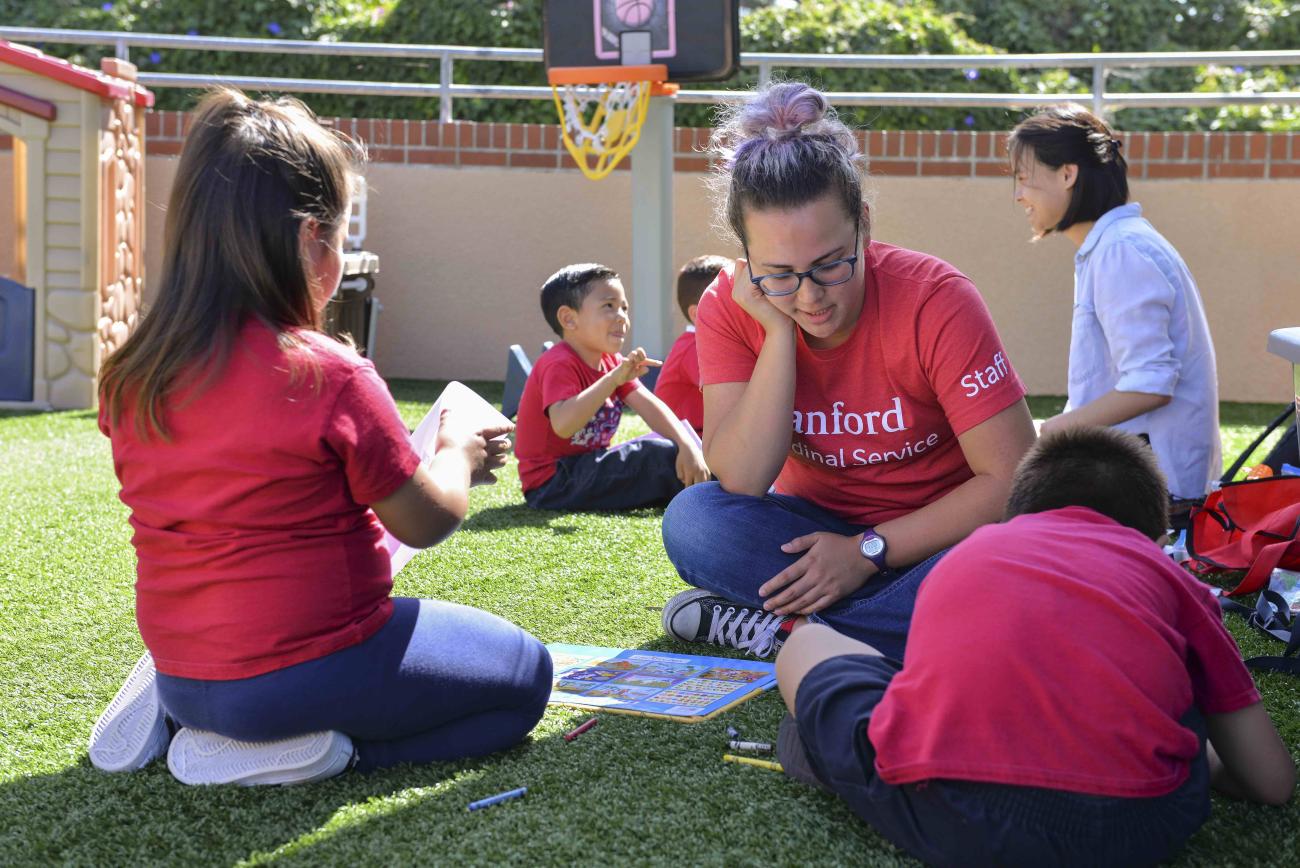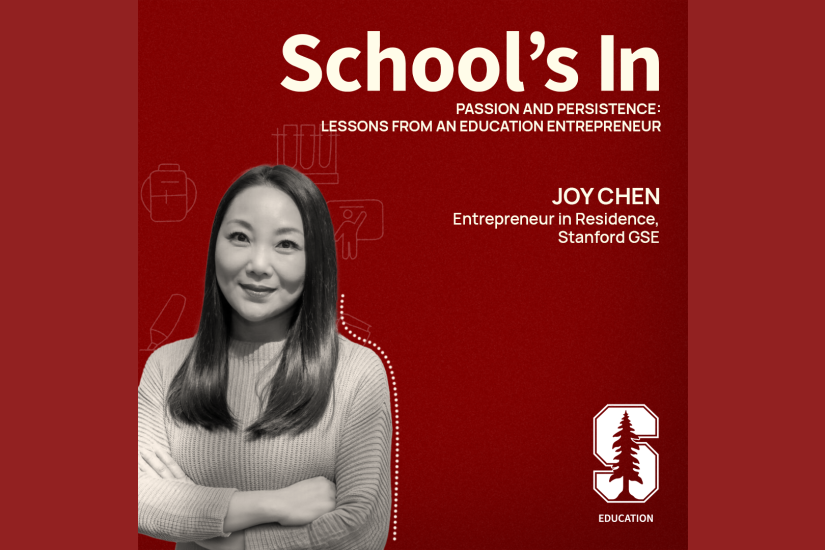
Math education program brings Stanford students into the preschool classroom
In a bright preschool classroom shaped like Noah’s Ark, two Stanford undergraduates take their young charges out onto the “bow” of the ship. It’s time for a little playful math in the sunshine, and these young learners are clearly excited.
The Stanford tutors are enrolled in Preschool Counts, a service learning program that combines rigorous coursework with real-world experience engaging young children from East Palo Alto in math activities. Professor Deborah Stipek, former dean of Stanford Graduate School of Education and current faculty director of the Haas Center for Public Service, started Preschool Counts in 2013 as a way to give undergraduates an opportunity to learn about child development and explore teaching while providing valuable support to local preschoolers.
The program, designed to serve as a model for universities across the country, has been implemented at UCLA and San Francisco State University.
Why early math?
“Literacy has gotten a lot of attention in recent years,” said Stipek, who also chairs Development and Research in Early Math Education, a network of scholars who seek to advance early childhood math teaching and learning. “But research shows that young children’s understanding of basic math concepts is a strong predictor of later academic success.”
Stipek, the Judy Koch Professor of Education, sees access to quality early math experiences as a matter of equity and key to narrowing the opportunity gap. For Stanford students enrolled in Preschool Counts, the coursework challenges them to consider questions of equity and opportunity while also equipping them for four to six hours each week in the classroom, where their work includes assessing children’s understanding and creating lesson plans. Their interactions with the children make the academic learning more nuanced and meaningful, Stipek said.
An emphasis on partnership
Preschool Counts is built on a model of service learning that emphasizes nurturing community partnerships and valuing reciprocity, humility, and respect for diversity. That means getting to know the teachers and school staff and supporting their goals for their students.
Renee Scott, program director for Early Education at the Haas Center, said the quality of the partnership is key to the success of Preschool Counts. Once students have completed the course, they can apply to be student leaders, who then mentor the tutors and learn how to build community partnerships.
“Essentially they are learning what it means to be a part of a nonprofit organization and how to maintain a partnership. Our leaders and our tutors are learning and the teachers recognize it—it’s a two-way relationship.”
St. Elizabeth Seton School Preschool Director Crystal Surita agrees. “The Preschool Counts tutors are amazing. They are positive, enthusiastic and patient with the children. I noticed the reservations they had at the beginning of the program and notice their growth as well.”
And, importantly, Surita sees the value for the children, many of whom enter school without basic math skills. “It has been amazing to see the growth of the children. At the beginning of the school year, many were unable to rote count, count objects 1:1, recall their count and record. As the program takes its course, I notice the confidence they have. They show understanding and are always excited to go with their tutors.”
The student experience
Scott says that many Stanford students come into the program with an interest in education and improving children’s lives, especially in marginalized communities. Once in the program, she said, they often cite the sheer joy of being with young children as what makes them love the experience.
Emma Poplack, ’18, took the course as a freshman and served as a leader for her remaining three years at Stanford. “I loved spending time with the kids—getting off campus and out of the Stanford mindset. Getting to spend time with little kids is so energizing yet grounding.”
Students also say they develop a deep respect for what preschool teachers do, and for the complexities of teaching young children. “I find tutoring to be an intellectual challenge,” said Laura Fraher, ’20. “I enjoy changing my focus to how my student is thinking about the math.”
Poplack credits Preschool Counts with altering her plans for the future. “The class was the first time I had learned about education inequity and policy,” she said. “I was inspired to learn and do more.” She added a minor in education to her international relations major and hopes to combine the two interests in her work after graduation.
Expanding the model
One of Stipek’s goals in creating Preschool Counts was to test a service-learning model that could be implemented at universities across the country. UCLA and San Francisco State now offer the course, adapted to meet the needs of their own students and community partners.
In 2017, UCLA launched the course as part of its Department of Education minor. Much like at Stanford, the course provides an opportunity for undergraduates to learn about mathematics teaching, learning and inequality as they work with young children. UCLA education Professor Megan Franke, who teaches the course, said it has provided a learning experience for undergraduates, teachers and preschoolers alike. “It’s been exciting to see them all learning together and discovering how much math young children can do.”
At San Francisco State, the course is part of teacher preparation. Linda Platas, associate chair of the Child and Adolescent Development Department at SFSU, says Preschool Counts has had a significant impact on her students, especially in helping them recognize and address their own fears of math in order to become confident math teachers.
She added that the response from SFSU community partners has been so positive that the program has expanded significantly in the short period of time since its launch. “We started with a small handful of preschool classrooms two years ago,” she said. “Not only did those teachers want to continue, but other teachers started contacting us to see if we could bring the program to their classrooms as well. This year we were in 19 schools.”
The rapid expansion of the program and its popularity with college students and community partners alike speaks to Stipek’s goal of making the program easy to implement in a variety of contexts. “That’s the beauty of this program,” she said. “The core concept—college-level teaching combined with community service—is very portable and adaptable, and the content is based on solid research.”
Preschool Counts is made possible by a grant from the Dhanam Foundation.



